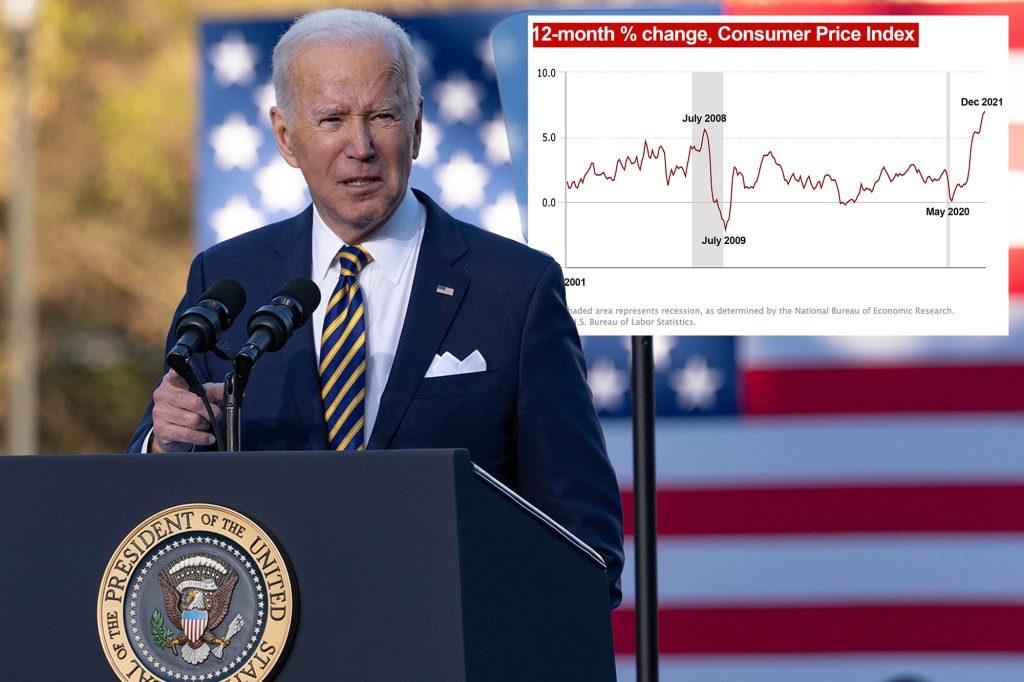President Biden on Wednesday insisted he was “making progress” on inflation — despite data showing it continued to grow last month for an annual jump of 7 percent, the highest increase since 1982.
The White House highlighted falling fuel costs in December and a lower overall monthly increase of .5 percent for common goods and services, versus .8 percent the prior month, even though the cumulative annual increase grew from 6.8 percent.
“Today’s report—which shows a meaningful reduction in headline inflation over last month, with gas prices and food prices falling—demonstrates that we are making progress in slowing the rate of price increases,” Biden said in a statement.
Although Biden claimed food prices were falling, the new Consumer Price Index data indicate that food prices actually increased by .5 percent from November to December, up in total 6.3 percent over 12 months. The monthly rate of increase slowed from .7 percent in November.
Energy costs did fall .4 percent in December, according to the new data, driven by falling gasoline and natural gas prices. But energy costs remain 29.3 percent higher than last year, according to the new data.


“At the same time, this report underscores that we still have more work to do, with price increases still too high and squeezing family budgets,” Biden went on.
“Inflation is a global challenge, appearing in virtually every developed nation as it emerges from the pandemic economic slump. America is fortunate that we have one of the fastest growing economies—thanks in part to the American Rescue Plan—which enables us to address price increases and maintain strong, sustainable economic growth.”
Biden administration officials last year called high inflation “transitory” and attributed it to COVID-19 supply chain bottlenecks rather than generous social spending initiatives.

Biden’s White House chief of staff Ron Klain on Wednesday retweeted a post noting that the monthly rate of inflation “has actually trended DOWN the last two months” — even though the annual rate of cost increases hit cumulative new highs.
High inflation is a major political liability for Biden and has contributed to his slump in recent polls, with an average disapproval rating of 53 percent and approval of just 42.8 percent, according to RealClearPolitics.
Sen. Joe Manchin (D-WV) all but killed Biden’s $2.2 trillion Build Back Better Act last month, saying he was concerned about high inflation and that budget “gimmicks” lowered the true cost of the package — as costs were spread over fewer years than revenue streams.

Biden’s critics blame him for high inflation, arguing that his American Rescue Plan Act, signed in March, spent $1.9 trillion without new revenue, in effect printing money. That bill gave $1,400 stimulus checks to Americans who earned up to $75,000 per year, extended a $300 weekly unemployment supplement through Sept. 6 and expanded the annual child tax credit to $3,000 to $3,600 per child, up from $2,000.
Biden’s stimulus followed bipartisan legislation in 2020 that distributed about $4 trillion to keep the US afloat during the pandemic. Biden signed in November a $1.2 trillion bipartisan infrastructure bill that the Congressional Budget Office said would add $256 billion to the federal deficit over 10 years.
